
Deforest Park
Location
Long Beach, CA
timeline
2019-2020
Role
Consultant
Services
More Info
Tucked between the Los Angeles River and a largely residential neighborhood, DeForest Park is a hidden gem for the North Long Beach community, which has nearly much less park space than the rest of the city.
With the high park need, this open space serves both local residents and regional visitors by offering sports courts, recreation fields, playground, community center, equestrian trails, and youth programs. The 34 acres of the DeForest Park Wetlands is located just south of 15-acre DeForest Park. City Fabrick partnered with Long Beach Parks, Recreation & Marine, Conservation Corps of Long Beach, and Camp Fire Angeles Council to develop the DeForest Park Vision Plan, which will guide future investment in the park and wetlands area. The Plan involved a robust public outreach strategy that engaged community members throughout the discovery and decision-making process. Based on the community feedback, City Fabrick developed a conceptual design and implementation plan for the future investment. The initial phases of the plan have been implemented with a new environmental learning center, youth campground, and pickleball courts being constructed.
Urban + Systems
Planning + Policy
Building + Interior
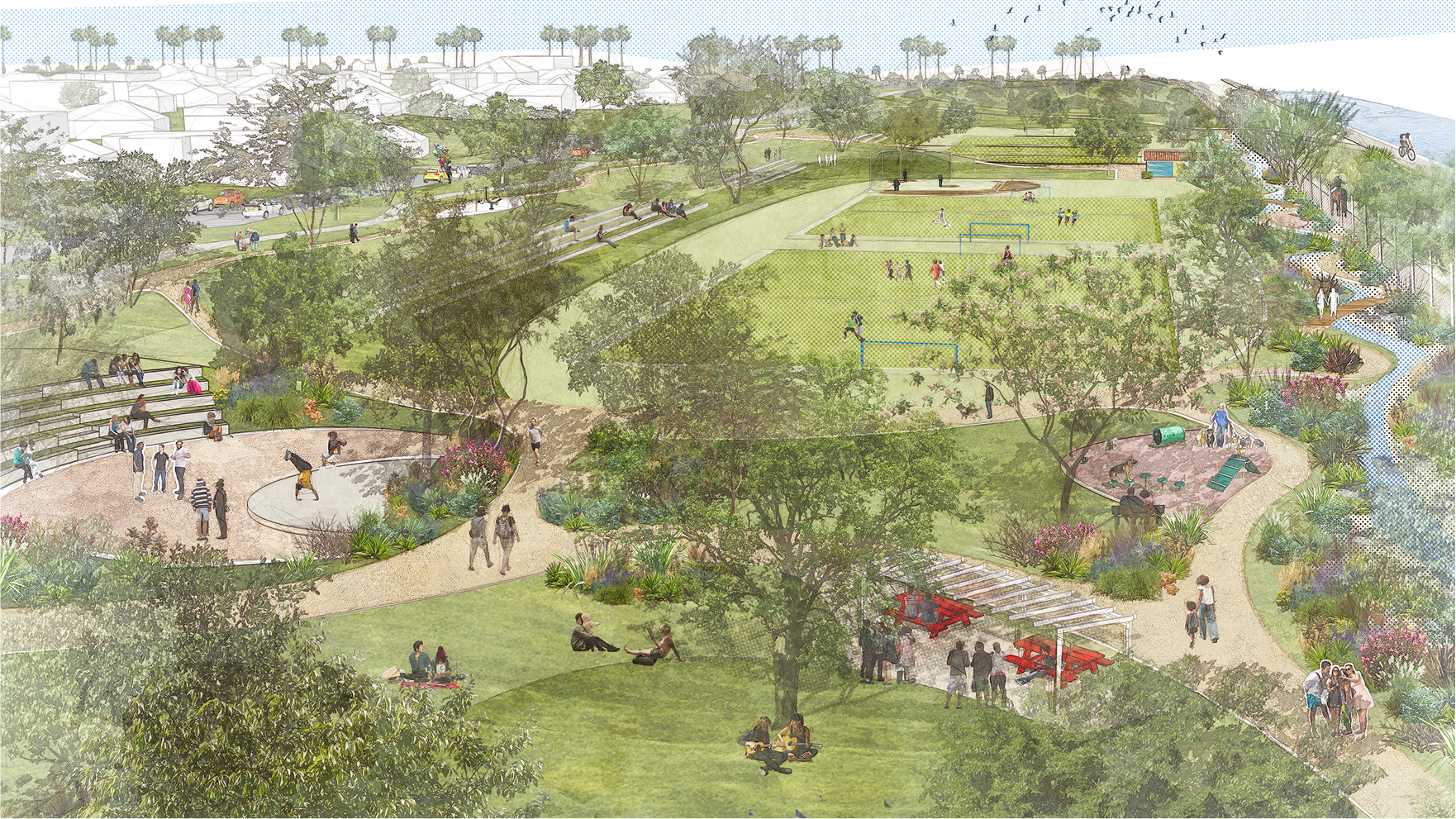
Landscape Architecture
DeForest Park draws inspiration from the oceans and foothills and harmoniously unifies the DeForest Wetlands to the south with the sloping terrain and forested landscape to the north. They are woven together by two north-south connections that offer unique walking, bicycling, riding experiences throughout the entire park. This design imagines a series of interconnected spaces within the park that overlap together with more seamless transitions between park-uses. The reimagined DeForest Park also responds to its surrounding context of the neighborhood adjacent to the Los Angeles River, serving the park needs of local residents and identifying the LA River as a regional opportunity for habitat restoration and play. This design maximizes north-south visibility and the utility of land by reshaping topography, building structures, and types of uses that are essential to meet the park’s full potential. A series of new cabin-like structures clustered around a central courtyard would host a variety of educational, community, and youth development programs. The conceptual design for the DeForest Park Vision Plan proposes a diversity of park amenities changes that serve the wide-ranging open space, recreational, and natural needs of the community. Community members were integral in the decision making process, expressing that the future vision of DeForest Park should focus on supporting families, including young children. The park design also integrates into the adjacent neighborhood with improvements to DeForest Avenue, adding chicanes, improved crosswalks, and on-street parking that allows the existing parking lot to be converted into a central plaza
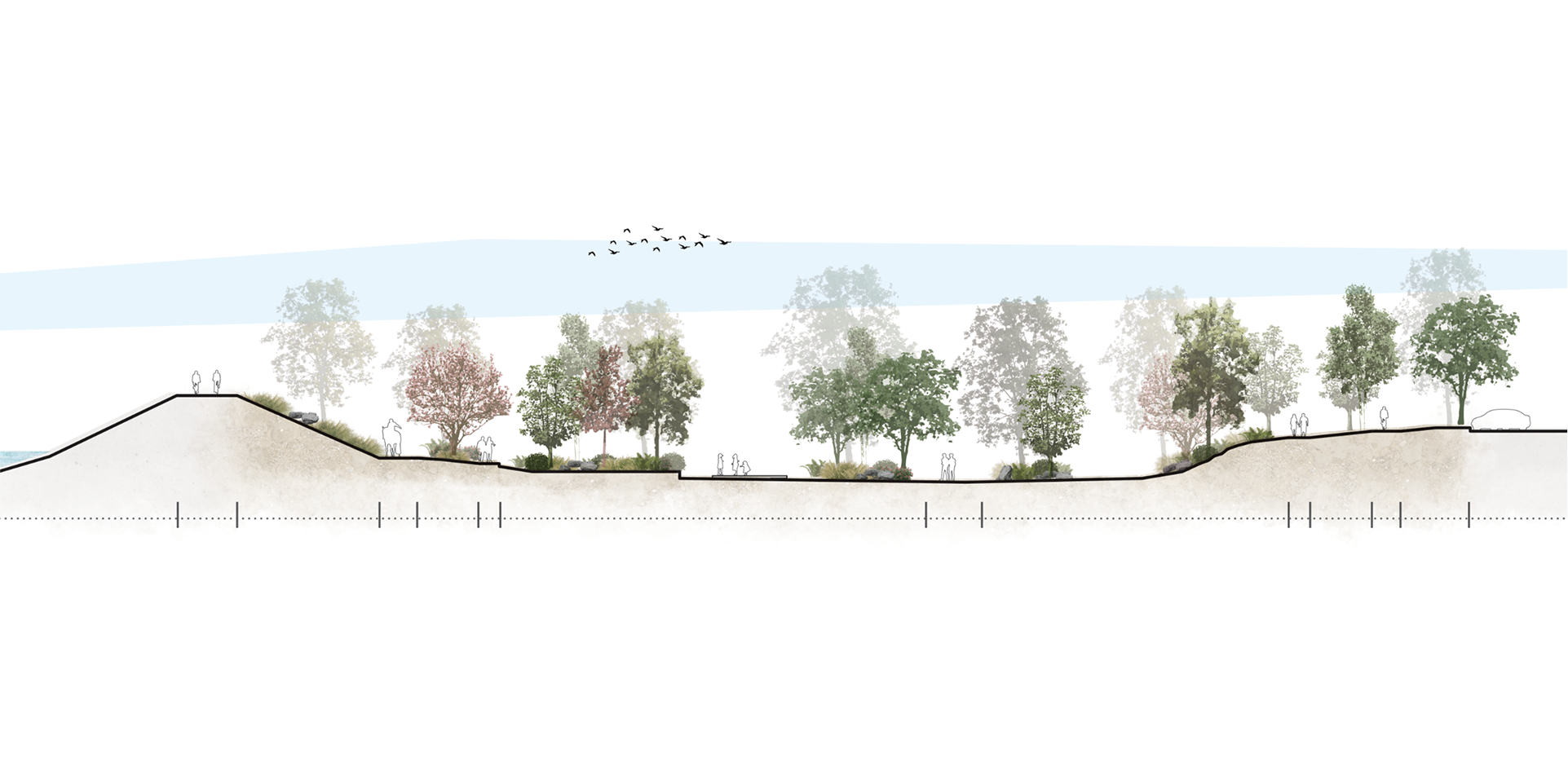
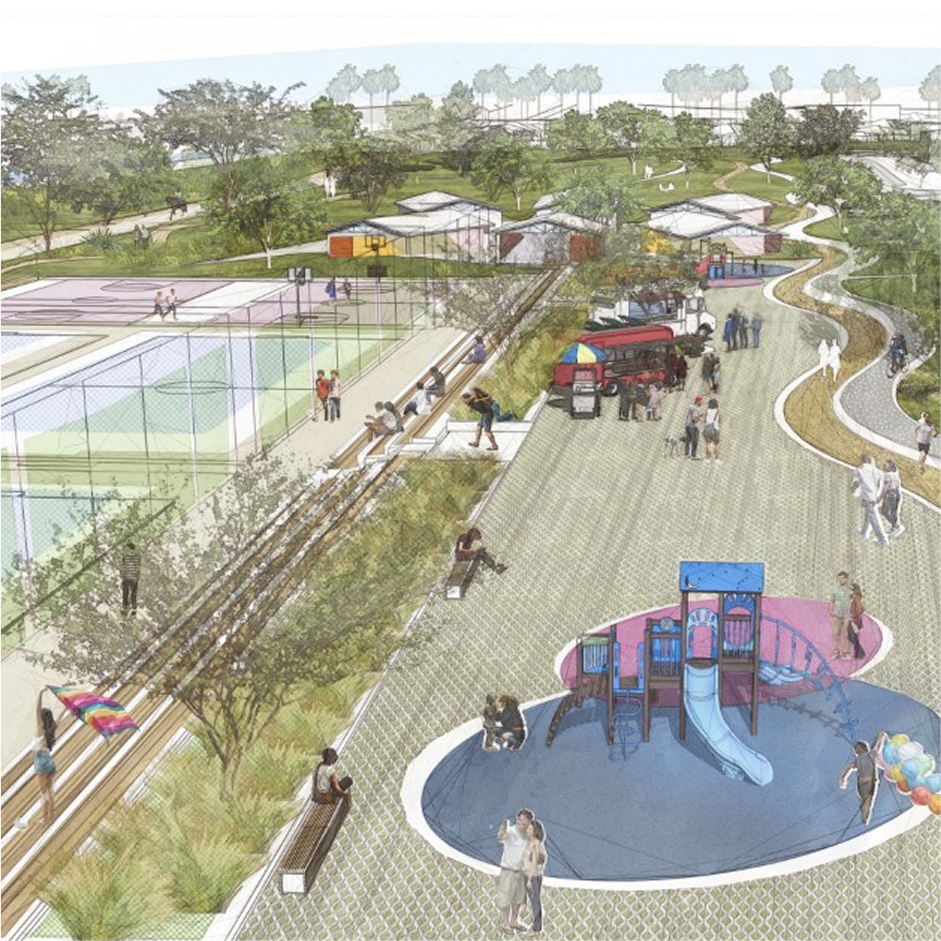
Graphic
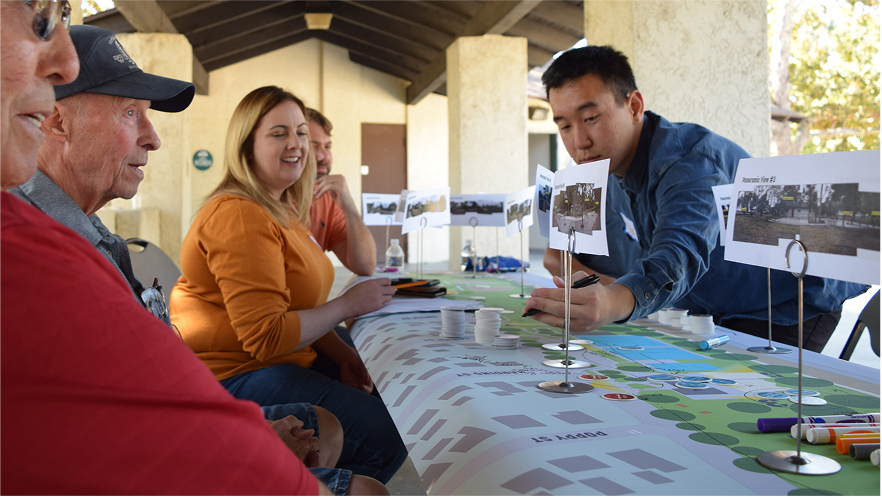
Engagement
The DeForest Park Vision Plan empowered community members to examine and reimagine their seemingly limited surrounding environment with creativity and imagination, while setting expectations in reality through a series of forced-choice decision making. Given the large and diverse population, the public outreach deliberately targeted those who have been historically excluded from planning processes, including disadvantaged communities of color, Spanish and Tagalog speakers, and youth and families. This involved hosting workshops at widely accessible locations and platforms throughout the community, including several park and neighborhood events that attract diverse populations, ensuring that materials were available in various languages, consistent with the City of Long Beach’s Language Access Policy. The public outreach activities were visually engaging so that community members of all ages would gain an increased awareness of the open space, active transportation, and land use planning process. Customized park planning board games, role-playing, and forced-choice exercises made the community design process fun and approachable while building consensus and empathy for other park users. The success of this planning effort continues beyond the public outreach phase as the development of this Plan was designed to be highly accessible and meant to be used as a park equity advocacy tool for decades to come.
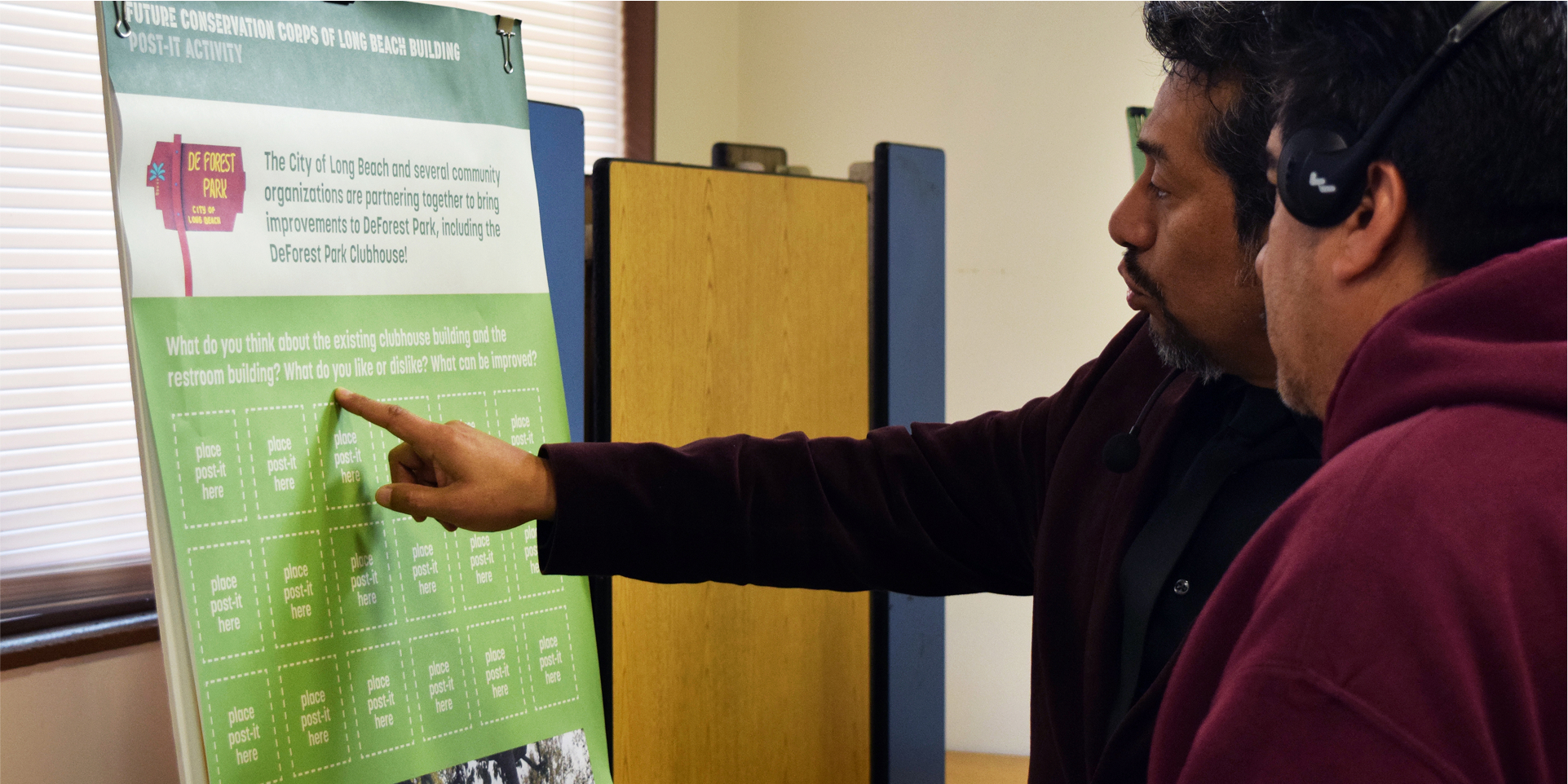
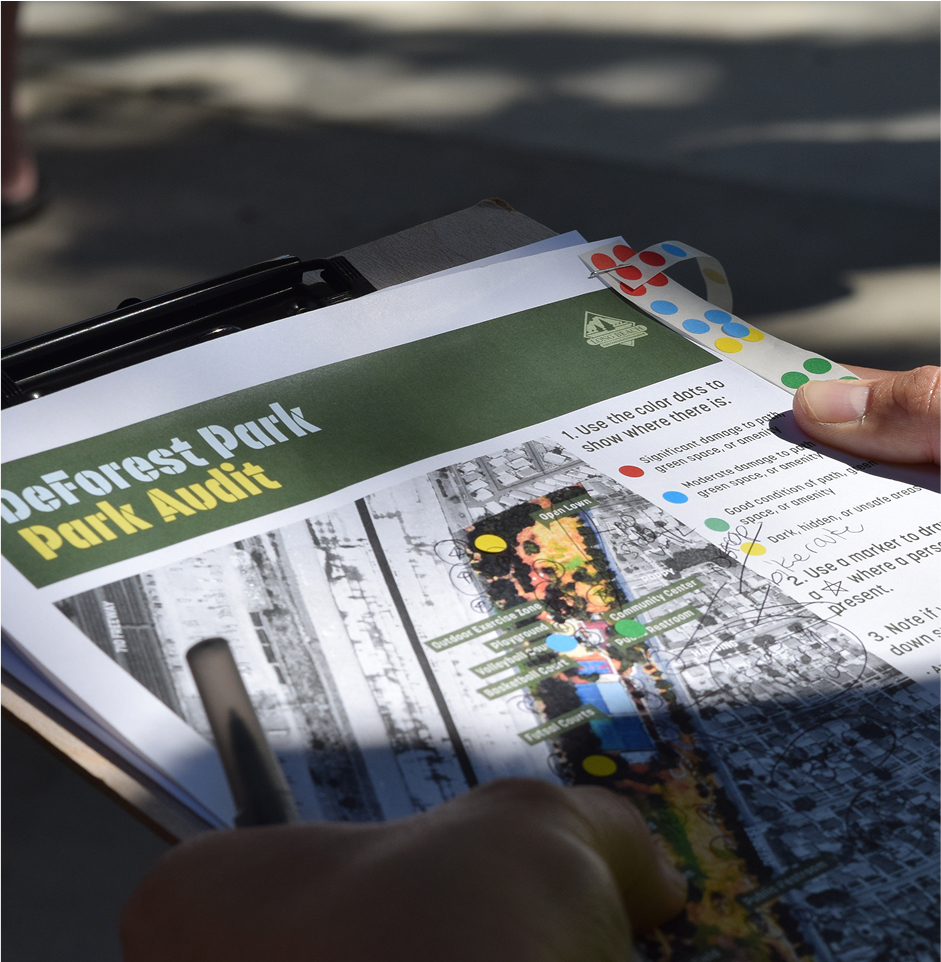
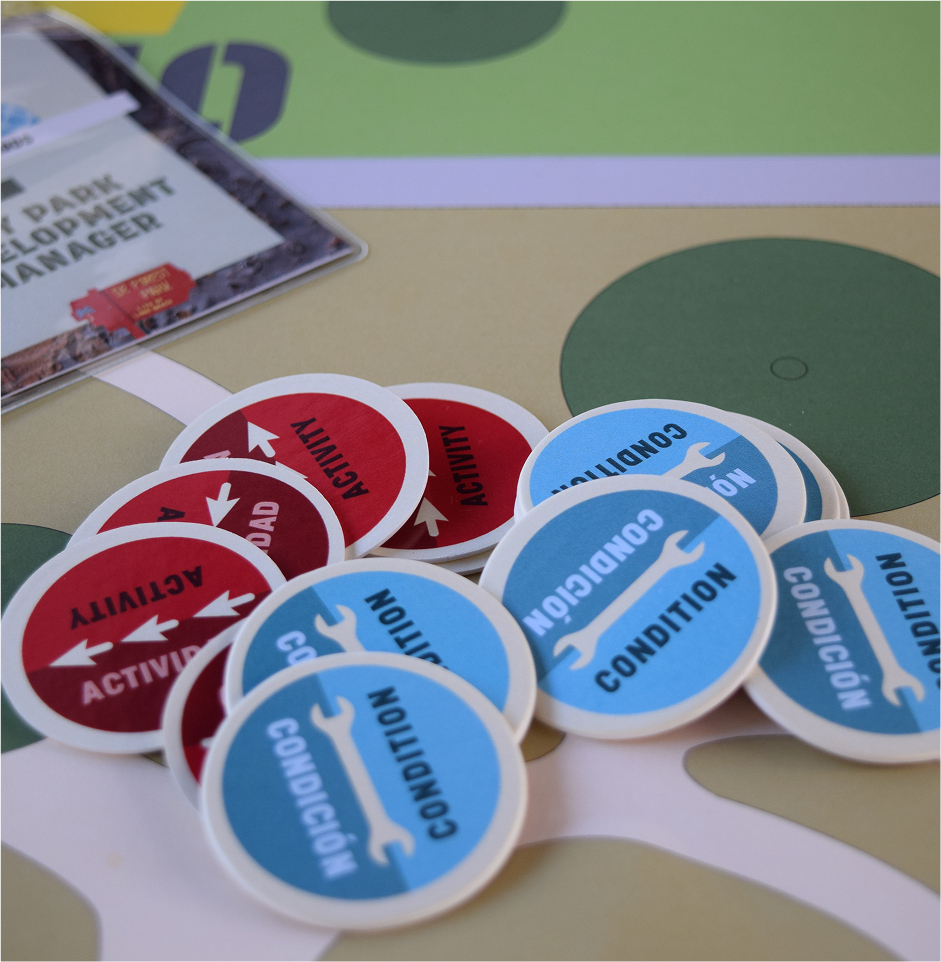
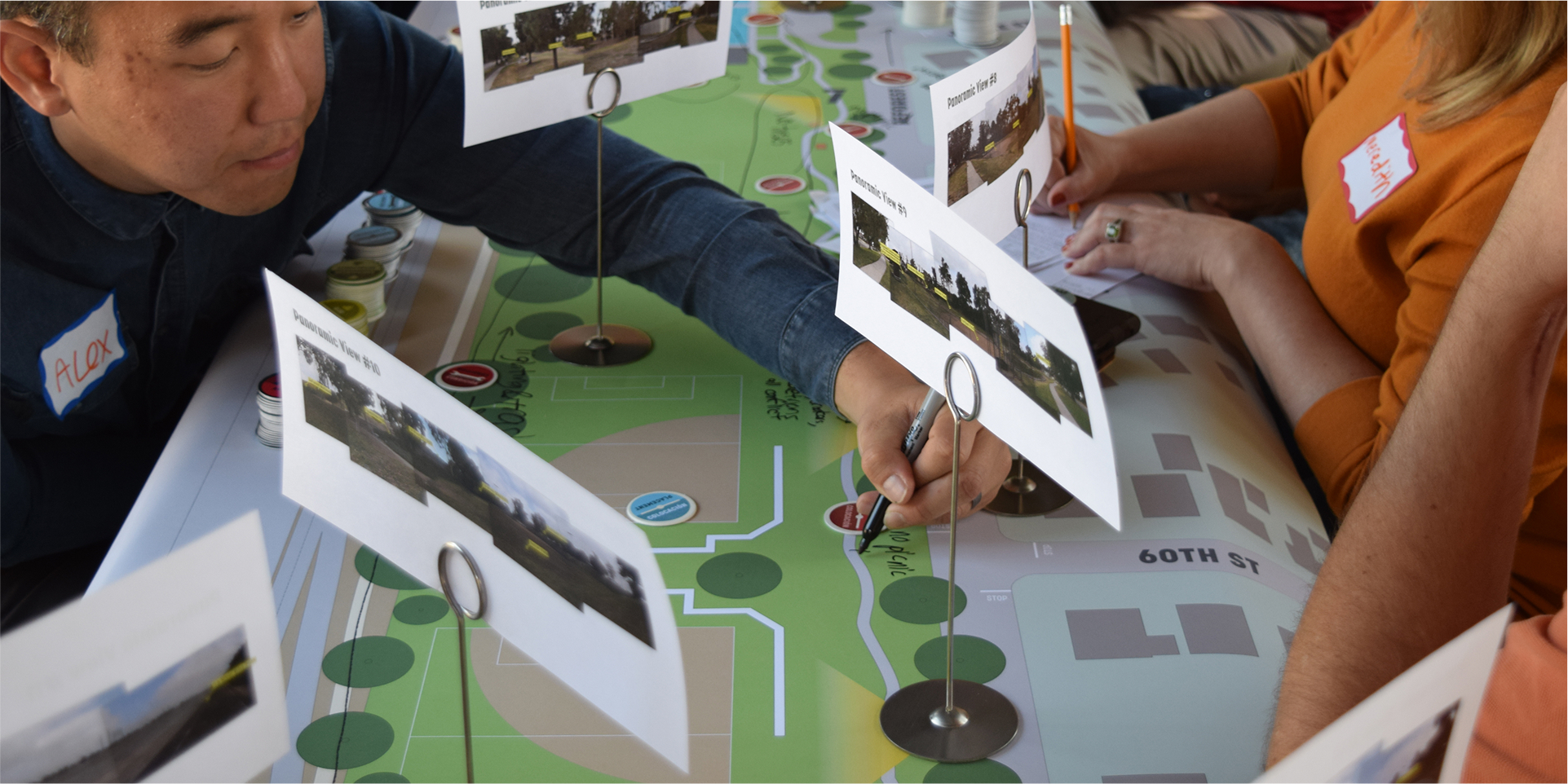
Tactical
Organization
“Planning for the future of DeForest Park is not just about making the park the best asset it can be for the community, but it is also about shaping the park as a diamond that enhances the lives of families, children and seniors alike.” — Community Member
